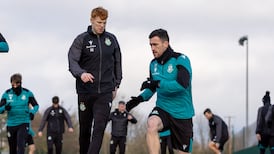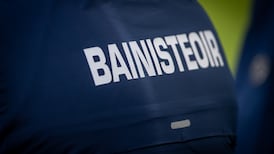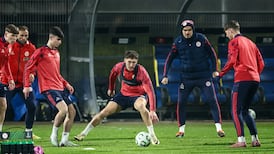Starting next season, all 32 teams will use a concussion assessment tool available on an iPad, and independent neurological consultants will join team doctors on the sideline
“Where are we?”
“Who did we play in the last game?”
“What is the date today?”
Those are some of the questions NFL players are asked after they are hit in the head during a game. Next season, they are coming to an iPad.
The mandatory post-injury sideline concussion assessment tool, instituted for the 2012 season along with a baseline test done during physicals at the start of pre-season, will now be used in app form by all 32 teams, a method that was tried by a handful of teams in a pilot program last season. The hope is that being able to compare the results of a baseline test and a post-injury test side by side in real time will speed diagnosis and help doctors and trainers recognise when a player should be removed from a game.
The league also plans to have independent neurological consultants on the sideline during each game to assist the team physician in diagnosing and treating players.
The players’ union, which had pushed strongly for independent doctors to be on the sideline, said it was encouraged by the technological advance the new test represented, but it still had questions about how much power the independent consultants would have to make decisions about players. The union wants the independent sideline concussion experts to have almost exclusive authority in detecting concussions and administering tests, in part because it believes team doctors are often busy attending to other injured players, while the concussion experts are there for one reason.
“If you’re busy and didn’t see the play, how do you know you need us?” said Dr Thomas Mayer, the union’s medical director. “This is a big enough issue we need an extra set of eyes, an extra judgment.”
The post-injury test is quick – it takes about six to eight minutes – and shares many elements with the baseline test to allow a comparison that might indicate a decline in function.
Both include a section on the players’ concussion history and a 24-symptom checklist; players are asked to score themselves on a scale of one to six in categories such as dizziness, confusion, irritability and sleep problems. Both note any abnormal pupil reaction or neck pain. There is a balance test and a concentration test, in which players, who are usually brought to the locker room to be evaluated, are asked to say the months of the year in reverse order, to recite a string of numbers backward and to remember a collection of words three times.
Then they are asked to recall them again, without warning, at least five minutes later. The words and sequence of numbers may be changed from test to test, so players cannot memorize them from a previous test to mask concussion symptoms – a fact that has annoyed players, according to Dr Margot Putukian, the director of athletic medicine at Princeton University Health Services and a member of the NFL’s Head, Neck and Spine Committee.
On the post-injury tests, there is one different element: a series of five questions designed to test orientation and glean how confused a player might be at that moment. They are: Where are we? What quarter is it right now? Who scored last in the practice or game? Did we win the last game? Those questions, known as Maddocks questions, were developed in the 1990s by an Australian doctor who worked with players in Australian rules football.
“What the application does, when you are evaluating the athlete, you actually see – as they are doing their word recall – his baseline,” said Putukian.
“He was able to remember 15 out of 15 words, and now he’s having trouble giving you five back right away? Maybe he’s only able to remember two? It gives you real-time information.”
The tests are far from perfect tools for diagnosing concussions. Some doctors are concerned the NFL tests are trying to reduce concussion evaluation to ticking items off a checklist, a problem Putukian acknowledged, emphasizing the importance of having doctors familiar with the players evaluate them.
Last season, New York Jets running back Shonn Greene took a hit to his helmet in a game and walked unsteadily back toward the huddle before quarterback Mark Sanchez sent him off. Greene later returned to the game, and the Jets said he had passed concussion tests given in the locker room. Also last season, San Francisco quarterback Alex Smith took a hit that caused blurred vision, but he remained in the game for several plays and completed a touchdown pass before being removed. He was subsequently found to have a concussion. While he was out, the back-up Colin Kaepernick took over, and Smith effectively lost his starting job.
“I think we have to be careful,” Putukian said. “The tool, it’s not the be-all, end-all. There are going to be athletes who have concussions that this tool does not pick up. It’s not a perfect test.”
She added: “Athletes may take this and perform this test and do fine on it. But you may know the athlete, athletes will stumble through it – ‘Yeah, we played the Seahawks’ – you know they are struggling. It’s not bang, bang, bang. They’ll give you the right answers, but they are struggling.
“If you know that athlete, you say: ‘I know you passed the test, but I know you. You’re not okay’.”
New York Times










